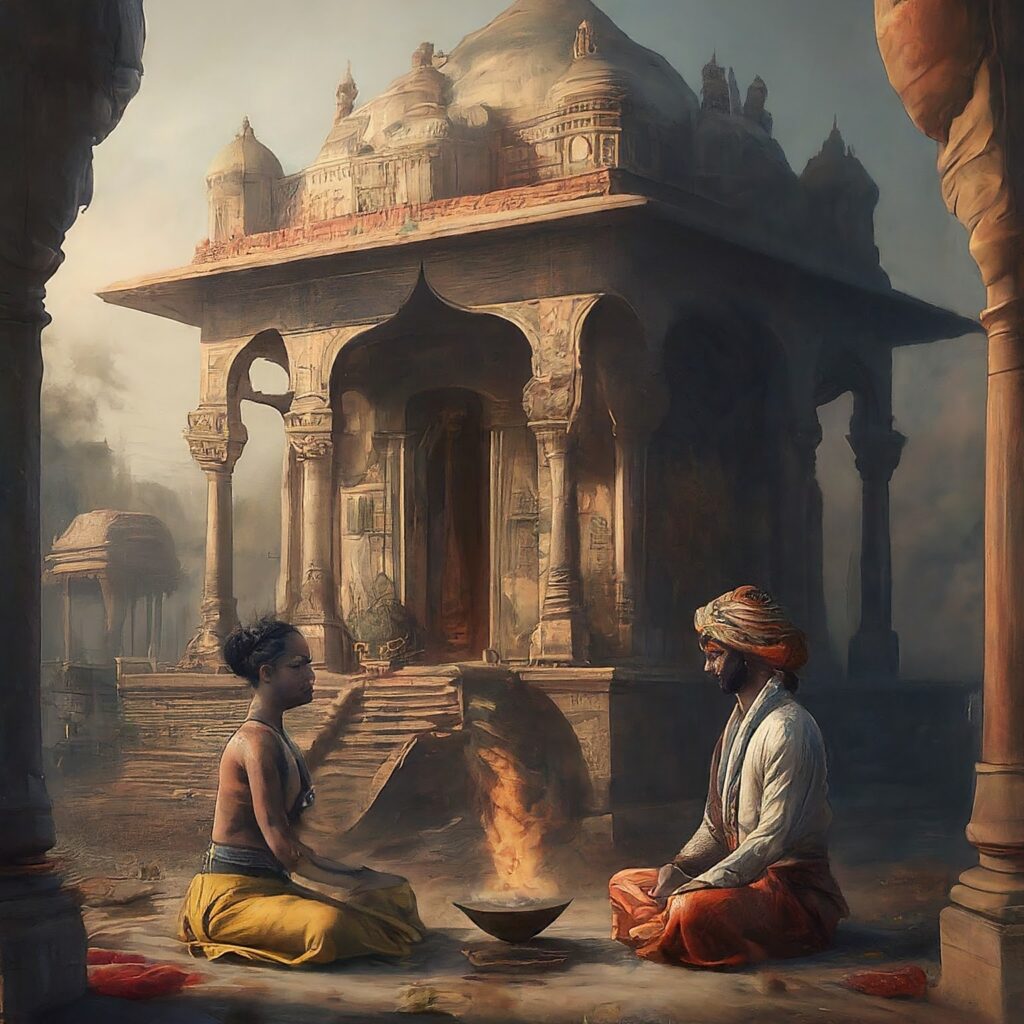Niyoga in Hinduism: Unveiling a Controversial Practice in Hinduism
Niyoga in Hinduism: Niyoga is an ancient Hindu practice that finds its roots in the sacred texts and scriptures of the religion. While it is a lesser-known aspect of Hinduism compared to other rituals and ceremonies, Niyogam holds significant historical and cultural importance. The term “Niyoga” itself is derived from the Sanskrit words “ni” (meaning certainly or definitely) and “yoga” (meaning union), emphasizing the notion of a purposeful union. This article delves into the multifaceted aspects of Niyog, exploring its historical context, scriptural references, purposes, controversies, and its relevance in contemporary times.

Contents
Historical Context of Niyoga in Hinduism:
Niyoga is mentioned in several ancient Hindu scriptures, including the Vedas, the Dharmashastra, and the Puranas. The concept is deeply ingrained in the cultural and social fabric of ancient India. Its roots can be traced back to times when the preservation of lineage and the performance of duties were considered paramount.
In the Mahabharata, one of the major epics of Hinduism, Niyog is elucidated as a practice to ensure the continuation of a family’s lineage when there is an absence of a male heir. The epic narrates instances where queens, facing the dilemma of an heirless state, turn to Niyogam as a means to uphold their family legacy. Notable examples include Queen Ambika and Queen Ambalika, wives of King Vichitravirya, who resorted to Niyogam with the sage Vyasa to produce heirs.
Read More>> Oldest Religion in the World
Scriptural References of Niyoga in Hinduism:
Niyoga is primarily discussed in the Dharmashastra, an ancient Hindu legal and ethical text that provides guidelines for righteous living. Manu Smriti, a key text within the Dharmashastra, outlines the circumstances under which Niyogam is considered permissible. It suggests that if a man is unable to have children due to impotence or untimely death, his widow may seek the union with a relative or a designated person to bear children.
The Rigveda, one of the oldest sacred texts of Hinduism, also contains references to the practice of Niyoga. The hymns in the Rigveda describe instances where widows, desiring offspring, engage in Niyog to fulfill their duty to their ancestors and gods.
Puranas, which are mythological texts that narrate the genealogies of deities and dynasties, also mention Niyogam. The Bhagavata Purana, for instance, recounts the story of King Harishchandra’s wife, Shaivya, who practices Niyoga with sage Vishwamitra to conceive a child.
Read More>> Significance of Swastik Symbol

Purposes of Niyoga in Hinduism:
- Preservation of Lineage:
- The primary purpose of Niyoga is to ensure the continuation of a family’s lineage, especially in cases where there is no male heir to carry forward the family name and traditions.
- Fulfillment of Duties:
- According to Hindu tradition, it is believed that every individual has certain duties and responsibilities (dharma) to fulfill during their lifetime. Niyog, in the context of producing heirs, is seen as a way to fulfill these familial and societal duties.
- Addressing Infertility Issues:
- Niyoga is also considered as a solution to the problem of infertility. In situations where a couple is unable to conceive naturally, Niyog offers an alternative means of procreation.
Read More>> Why do we Ring Bells in Hindu Temples?
Controversies Surrounding Niyoga in hinduism:
Despite its historical significance, the practice of Niyoga has been a subject of controversy and debate within Hindu society. Some of the key points of contention include:
- Social Stigma:
- In contemporary times, Niyogam is often viewed through a lens of social stigma. The idea of a widow engaging in a union with someone other than her deceased husband has faced criticism from modern perspectives, leading to a reluctance to accept or discuss the practice openly.
- Gender Dynamics:
- Critics argue that Niyogam perpetuates gender imbalances, as the practice historically involves a widow seeking a male partner for procreation. This raises questions about agency, consent, and the autonomy of women in making decisions related to their reproductive rights.
- Relevance in Modern Society:
- In today’s world, where assisted reproductive technologies are available, Niyoga is seen by some as an outdated practice. The advancement of medical science has provided alternative solutions to infertility, making the traditional method of Niyog less relevant in contemporary society.
Read More>> Significance of 108 in Hinduism: Exploit Spiritual Connection
Relevance in Contemporary Times:
While Niyoga may be less prevalent in modern Hindu society, its relevance can be explored from various perspectives:
- Cultural and Historical Understanding:
- Studying Niyoga offers a glimpse into the cultural and historical practices of ancient Hindu society. Understanding its context helps in appreciating the diversity of traditions within the religion.
- Ethical Discussions:
- Niyogam sparks ethical discussions around reproductive rights, autonomy, and societal expectations. Exploring these discussions in the context of Niyog contributes to a broader dialogue on ethics in contemporary society.
- Cultural Heritage:
- For those interested in preserving and promoting cultural heritage, the exploration of Niyogam provides insights into the values and customs of ancient Hindu communities. It contributes to a comprehensive understanding of the diverse practices that have shaped Hindu traditions.
